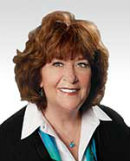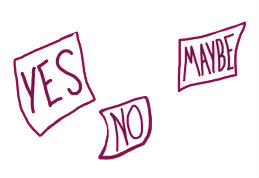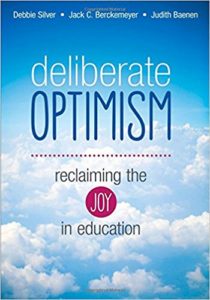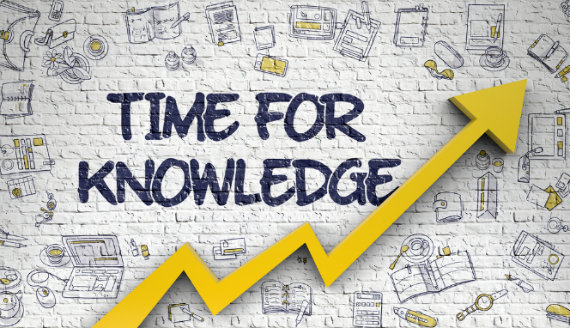The Worst Teaching Mistake I Ever Made
 By Debbie Silver, Ed.D.
By Debbie Silver, Ed.D.
Teacher-blogger Larry Ferlazzo once asked me to write about the biggest teaching mistake I ever made. My first thought (with apologies to Elizabeth Browning) was, “How did I screw up? Let me count the ways . . .”
For Larry’s “New Teacher Advice” column, I chose to write a piece about underestimating my introverted students. But another major misstep has continued to plague my memory. Somehow, I managed to teach my middle level science classes for too many years without ever fully embracing an absolutely essential practice of all effective teachers.
The kids mumbled their uh-huh’s
I spent hours creating great plans for each science unit. I loved to get ahead of the game by copying whatever worksheets I needed for future classes, diligently seeking out engaging hands-on activities, planning my lecture presentations, and writing out appropriate discussion questions.
Confident that I was ready to cover the chapter, I would stand before my middle school students, smiling and bobbing my head to cue a “yes” response, and ask the rhetorical question: “So last year did everyone learn about ___?” My students would mumble their “uh-huh’s” and away I’d go. I had much to cover and precious little time to do it.
It wasn’t that I didn’t realize some students might not be up to speed quite yet on the topic of the day – or that others might have already mastered things I was presenting as new knowledge. I just felt I could help the strugglers catch up as we went along, and I could direct the high flyers to the Going Further section at the end of the chapter.
So what was I leaving out?
I now regret how my “full steam ahead” approach to lesson delivery missed one of the most important elements in good teaching: pre-assessment. Or put another way: What the heck do each and every one of these kids know or not know about this?
I thought I was differentiating instruction because I often used cooperative learning, varied my instructional techniques, and occasionally threw in an alternative assessment. But I missed that one critical reality. It is impossible to differentiate instruction effectively (aka, reach each student where they are) without using purposeful pre-assessment.
I didn’t think I had time to spend on another test or even simple strategies like doing a K-W-L chart or a Gallery Walk to assess what students knew. I had so much I wanted to tell and show them!
I don’t know how that concept of pre-assessment eluded me for so long. I would never go back to a doctor who made a diagnosis or prescribed a round of antibiotics without a thorough examination that included a review of my medical history. Right? And I have little tolerance for mandated professional development that merely repeats information I already know.
I made a big mistake. You can do better!
Slowing down to speed up
It took me a while to realize how much more effective I could be by slowing down long enough to figure out exactly where my learners were in terms of strengths, weakness, knowledge, and skills. Once I began to try and accurately gauge where students were in their learning before I finalized my planning, I realized that I actually saved time in the long run.
Often, I found that students were far more informed than I had previously thought and just needed some prompts to remind them of what they already knew. (e.g., Thinking about the immune system, how is it like a police force?)
Other times I realized I had over-estimated my students’ understanding of a topic. Some of them had strongly held naïve ideas that needed to be addressed (e.g., A dropped rock will hit the floor before a paper wad). Ultimately, I learned to invest the “extra” time up front and find out about my learners (all 180+ of them). It greatly streamlined the teaching/learning process for all of us. (Hang on – I’ve got some ideas to share about how to do this.)
A More Informed Approach
I finally realized there was no way I could help students reach that optimal learning place between challenge and accomplishment without predetermining where they were starting from. I could no longer just walk in and teach to the students I assumed they were.
Instead of being irritated by the high flyer kid who took one look at my lab set-up and said, “Oh I know what we’re doing today. I’ve done this before, and I already know what’s going to happen,” I learned to respond, “After looking at the pre-assessment, I had a feeling you might be ahead of the rest of the class on this concept. Here’s something I found I think will challenge you and give you a chance to learn something new, too.”
Rather than merely being sympathetic to strugglers who lagged, I realized I needed to modify my instructional strategies ahead of time to provide them opportunities to learn new material within their current reach. Consistently presenting them with expectations far beyond their grasp only reinforced their feelings of helplessness and futility. Ironically, when I focused more on their incremental gains and less on end-of-the-chapter test scores, both their interest and their grades increased.
Pre-assessment marks the starting line
It’s hard for students (and their teachers) to know how far they’ve progressed without an accurate assessment of where they began. Consider:
- Formal pre-tests can provide documentation of where students started.
- Comparing their pre-test results to their summative assessments yields far more valuable information to the students, their parents, and the teacher than any standardized or departmental test.
- Focusing on growth rather than on finite scores inspires incremental (growth) mindsets and helps to build self-efficacy in learners. And…
- Informal pre-assessments can be woven into discussions, introductory activities, and engaging undertakings.
I figured out how use all manner of strategies to identify experiential backgrounds, individual interests, and prior knowledge, and even uncover misconceptions students had about different subject areas. Thankfully, ideas for pre-assessment abound on the internet (and there’s always the “creativity-challenged” teacher’s best friend, Pinterest).
A few of my favorite pre-assessments
Number Line – Large numerals from 1 to 7 are mounted on a classroom wall or in the hall. With 1 being strong agreement, and 7 being strong disagreement, students stand under the number that best represents their current state (e.g., I understand this concept well enough to teach it to someone else.)

Graffiti Wall – With colorful markers and large poster paper, students creatively design a Graffiti Wall of things they know about a specific topic of study. You can encourage them to add to the wall throughout the unit as they gain new knowledge.
Silent Brainstorming – Divide students into groups of four or five. Give each group a large piece of paper or poster. Give each group member a pad of sticky notes. With absolutely NO talking, everyone has three minutes to post as many ideas, explanations, bits of information, or questions as they can (each is written on a different note) on the poster paper. After three minutes, group members discuss and organize their notes. They combine their ideas into two or three summarizing sentences and write them at the bottom. Each group then presents their sticky-covered poster, with summary statements, to the entire class.
Make the time!
Today I cannot imagine teaching a lesson without the valuable roadmap that pre-assessment provides. When I work with teachers who tell me, “I just don’t have the time to do it,” I respond, “Make the time. It will improve your teaching in ways you never imagined, and not doing it was one of the biggest teaching mistakes I ever made.”
So, what’s your biggest teaching mistake? Are you willing to share it here and let others know how you solved it? Talking about our missteps can help other teachers realize they are not alone. Be brave and tell us what you’ve learned along the way.







































I enjoyed reading your article. As an elementary physical education teacher I often run into this problem. I am torn between getting/ keeping my students active and coming up with new ways to gauge what they have learned from my units. I see my students for 25 minutes. do you have any suggestions for quick pre/post assessments?
You could put a number line 1 -10 on a wall. Ask the students to stand under the number that best represents their expertise in the skill you are trying to teach. Tell them “10” represents expert, meaning they could teach to others. “1” represents total inexperience. Ask students choosing the same number to stand in front of the person already there. This will give you a visual snapshot of where your students are as learners. It’s quick and easy. You can even fold the line to put the most experienced students with the least experienced.